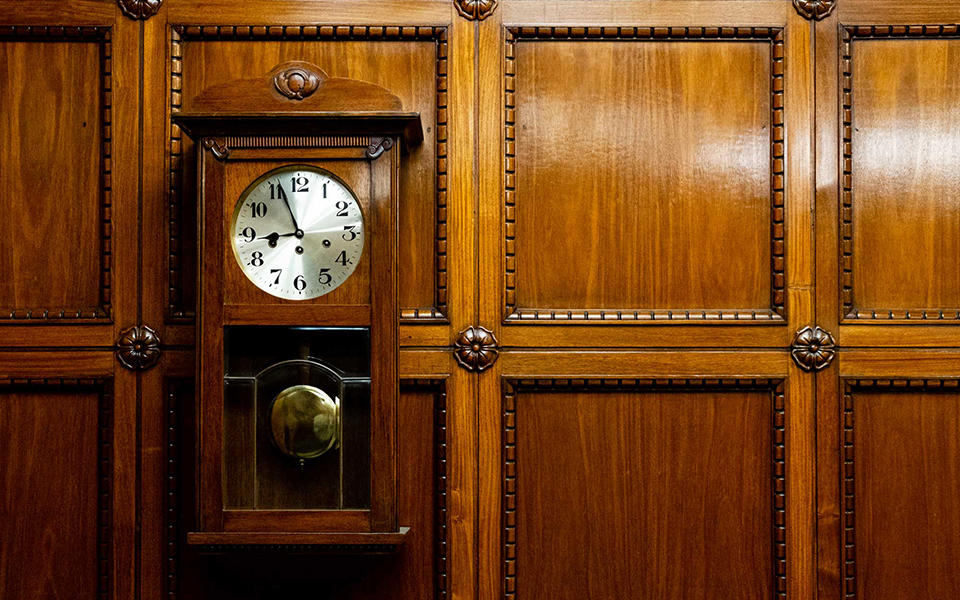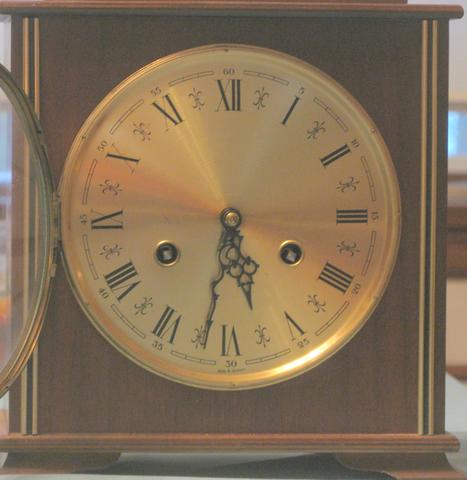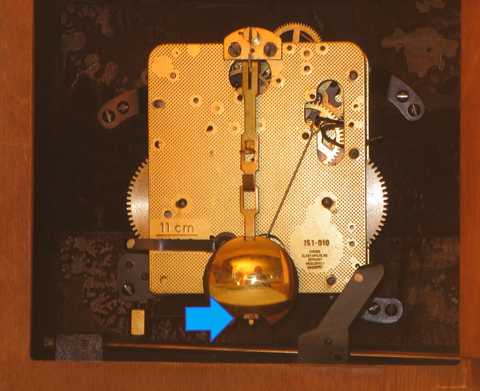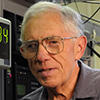Taking Measure
Just a Standard Blog

Pendulum clock.
This is part 3 in a series. Read part 1 and part 2.
Oscillators and Clocks
In the previous essay, I introduced the ideas that frequency and time interval are closely related concepts, and that the time at any instant is a count of the number of basic time intervals (such as the second) that have elapsed since some origin. These relationships became very significant because of two developments in the late 19th and early 20th centuries.
The first development was radio, and by the early years of the 20th century there were a large number of radio stations. Each station was assigned a unique broadcast frequency to avoid interference with other stations in the same (relatively large) geographical area. One of the early tasks of the National Institute of Standards and Technology (NIST, which was known as the National Bureau of Standards for the first 87 years of its history) was to design standards of frequency for use by radio stations and to disseminate standard frequencies to facilitate the proper operation of these stations. The frequencies transmitted by the radio station WWV from Beltsville (Greenbelt), Maryland, were designed to satisfy these requirements.
Precision clocks were also developed at that time. The earliest precision clocks combined a pendulum, which provided periodic “ticks,” and a mechanical system to count the ticks and display the result as the current time.
If the amplitude of the swings (the amplitude is the maximum distance that the pendulum moves from its center position) of the pendulum is small, the period of the motion — the time interval needed for the pendulum to make a round-trip between one of the end points of the swing and return — is proportional to the square root of the pendulum length. Remarkably, the period is independent of the amplitude of the swing and the mass of the bob (the weight at the end of the pendulum). A pendulum with a period of one second is about 0.25 meters (about 10 inches) long. A pendulum clock also has an escapement — a special toothed wheel that advances by one tooth each time the pendulum completes a swing. The escapement also provides a gentle push to the pendulum on each swing to replace the energy lost to friction. The advance of the escapement is coupled to hands on the face of the clock by a suitable arrangement of gears. The gears and the length of the pendulum are designed together so that the hands of the clock display time in the conventional units of hours, minutes and seconds.
The time displayed by a pendulum clock has to be initialized when the clock first starts operating – the pendulum system defines only time interval, and the origin time must be specified by a method that is separate from the operation of the clock itself. For example, the clock could be initialized to noon apparent solar time on some day. As I mentioned in a previous essay, there is an annual variation in the length of the day measured by apparent solar time (which could be defined, for example, as the time between consecutive sunrises). The difference between apparent solar time and the time shown by the clock is given by the equation of time that I discussed earlier. The maximum value of this difference is 16 minutes. If apparent solar time is the fundamental definition of time, then if a pendulum clock were to continue to display a time that agreed with the definition then this would require a corresponding annual variation in the period of the pendulum. But there is no simple method for adjusting the length of the pendulum to match the annual variation in apparent solar time.

Although electronic oscillators were initially intended for applications that required a reference frequency with no explicit link to time (the broadcast frequency of a radio station, for example), a clock could also be constructed by using an electronic oscillator as the source of the periodic “ticks.” The escapement in a pendulum clock would be replaced by a circuit for counting the cycles of the oscillation, and the gears would be replaced by suitable electronic components to drive the hands in a mechanical display. A “quartz” wall clock or wristwatch that has an analog display often uses a hybrid design. The ticks from the oscillator are used to advance the second hand, and the minute and hour hands are advanced from the second hand by gears as in a mechanical clock.

The earliest electronic circuits used various components to define the oscillation frequency, but the mechanical vibration in quartz crystals was used as the frequency reference starting in the 1920s because the vibration frequency of the crystal was much more stable than the frequency defined by coils and other electronic components. The mechanical vibration of the crystal generates a small voltage by the piezoelectric effect, the voltage is amplified to produce the output frequency, and a portion of the output is used to sustain the oscillations of the crystal and to compensate for the energy lost in the circuit.
A counting circuit was used to generate ticks with a one-second period. This circuit was the analog of the gears that converted the period of the pendulum to one-second ticks to advance the clock hands. Just as with a pendulum clock, the frequency of the oscillator and the counting circuit were designed together. The frequency of the oscillator could be chosen based on other considerations: size, weight, and power requirements, for example, or minimal sensitivity to fluctuations in ambient temperature and similar effects.
Although the accuracy and frequency stability of pendulum clocks continued to improve, oscillators that used a quartz crystal as the frequency reference were much more stable, and oscillators that use a quartz crystal as the frequency reference are widely used today. Various techniques have been developed to compensate for the variation in the output frequency with a change in temperature. For example, the quartz crystals in wristwatches are designed so that the vibration frequency is correct when the watch is at normal body temperature. More sophisticated techniques include enclosing the crystal in a special oven to keep it at a constant temperature.
Electronic oscillators made the conflict between clock time and apparent solar time much more serious. It might have been acceptable to ignore the discrepancy of a few minutes between pendulum clocks and apparent solar time in everyday timekeeping. However, it was simply impossible to adjust the frequencies of a large number of radio stations so that the time displayed by electronic clocks that used the broadcast frequency as a reference would match apparent solar time.
Mean Solar Time
The solution to the discrepancy between time displayed by a clock and apparent solar time was to define mean solar time. The motion of the real Sun, which defines apparent solar time, was replaced by the motion of a fictitious Sun, which agrees with the motion of the real Sun when averaged over a solar year. (The actual definition of the motion of the fictitious Sun is a bit more complicated, but that complication is not important for the current discussion.) The difference between mean solar time and apparent solar time is, again, the equation of time.
The definition of mean solar time was intended to define a time based on astronomy that would remove the annual variation in apparent solar time. The intent was to preserve an agreement (at least approximately, as I will discuss later) between the time defined by clocks and the time defined by astronomical observations. But it is important to recognize that the change between apparent solar time and mean solar time had significant philosophical implications.
In spite of its deficiencies, apparent solar time is important. It drives the circadian response of plants and many animals. It is easily understood by anyone with no special technical training. It does not depend on technical experts — there is no need for a professional time service.
The change to mean solar time may not have been a big deal from the perspective of everyday timekeeping – the maximum difference between mean solar time and apparent solar time was small enough that it did not make a fundamental change in everyday life. But it was the first step away from the simple, everyday notion of time. It was no longer enough to simply look at the Sun and know the time — it was also necessary to know the day of the year to know the offset between mean solar time and apparent solar time on that day. In addition, the details of the definition of mean solar time and the derivation of the equation of time include concepts that are not completely trivial — the experts have returned to the definition of time.
The change to mean solar time was the first small step down a slippery slope away from the simple, everyday understanding of the concept of time, but there was more to come.





